From Family Farm to Table: Why I Love Pure Maple Syrup
There’s a place I cherish and go to in April, a remote cabin in the Canadian countryside with cows and maple trees and family joy. Over 50 of us gathered there this spring, I’d guess an average turnout. Our cabane à sucre, a celebratory sugaring season party, lasted about six hours and I savored every moment like I did the pure maple syrup at its core. That night, reflecting on this traditional family farm event I’ve attended since I was a baby, where my mom went in her youth as did her mom’s family and generations before them, I wondered, what makes it so special?
Let’s go back in time.
My grandmother was born in a farmhouse in the Centre-du-Quebec region in Canada, a little over three hours away from me now in Vermont, as were her four sisters, seven brothers and a swarm of cousins, typical of the French Canadian family landscape back then. While most of her siblings established homes near my great grandparents’ family farm, my grandma married and moved to an industrial town with my grandpa. Their eight children, including my mom, spent their summers scattered on her siblings’ family farms. For my mother, it was my granduncle’s farmstead comprising a modest folk house, pig sty, chicken coop, large cow barn and sugar shack, nestled in a valley spanning acres of land on each side of a swift river: on one side, hills with fields for cows to roam in and, on the other, a dense collection of maple trees.
In addition to dairy, maple syrup has been a central element of the harvest on this farmland, now owned by my granduncle’s son (my mom’s cousin, thus my first cousin once removed). I got to know that family farm pretty well as a kid, for my mom often took us there to help during hay season in addition to our yearly spring visit.
Let’s make pure maple syrup.
The weather-dependent season to make this delicacy is short, as settlers learned from Native Americans long ago: around six to eight weeks in March and April, when the spring sun warms the woods and sap starts to run, while nights are still freezing and tree buds have yet to swell. Maple sap is collected from holes drilled a month or so prior, filtered and boiled down until the water has evaporated and left a pure, natural, concentrated, sweet syrup.
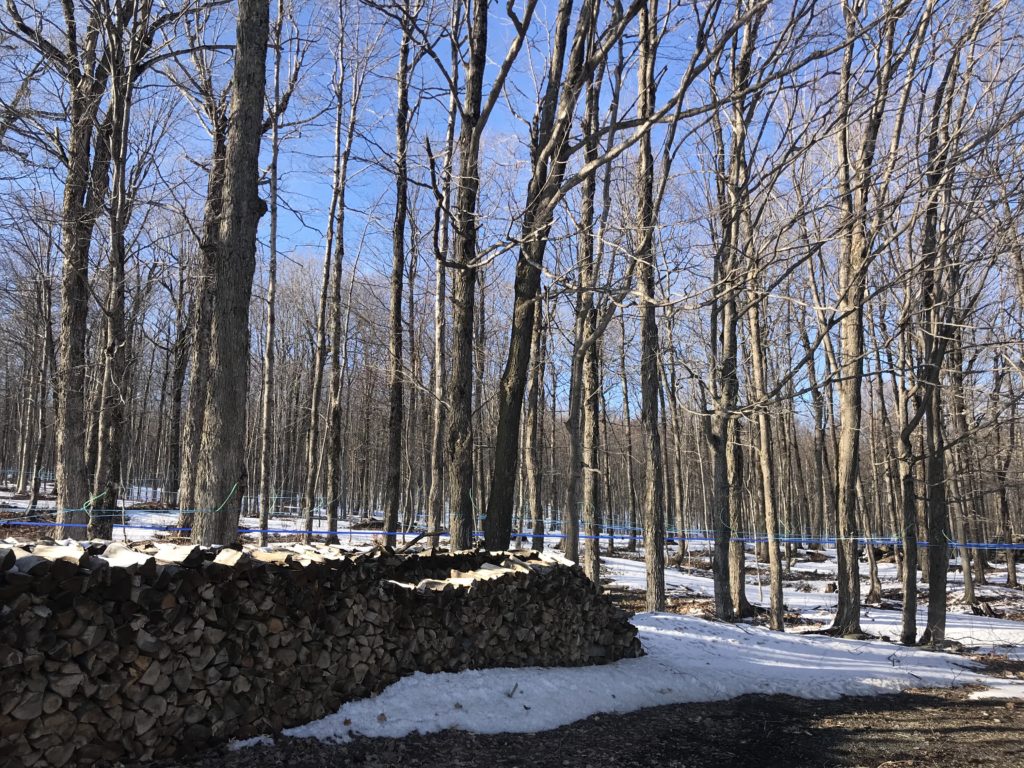
Depending on the year, Quebec contributes around 70% of the world supply of pure maple syrup. The next biggest production is here in Vermont, where sugaring customs, like for Quebecers, are as deeply ingrained among generations of Vermonters as the maple trees rooted throughout the beautiful Green Mountain State.
When I was young, my granduncle would set taps throughout his sugarbush on the far side of the river and sap would drip into buckets hooked underneath. His sugar house, a rough cabin with a thin metal chimney and a door latched by a wooden bar with a rusty nail, was at the top of the hill amidst the maple grove.
To get there, while he crossed with the horses, we climbed into his moving pulley bridge: a large wooden box he built that ran with wheels on cables stretched from one bank to the other. Suspended about 20 feet above the unruly frigid river, coming to a stop mid-way across after the initial momentum, we sat tight while my mom pulled on a steel cable and tugged us to the other side, like they did for her as a kid. We then walked up the hill covered in spring snow with our gear for the day, what felt to my little legs like an interminable hike through beds of coarse salt beneath my boots.
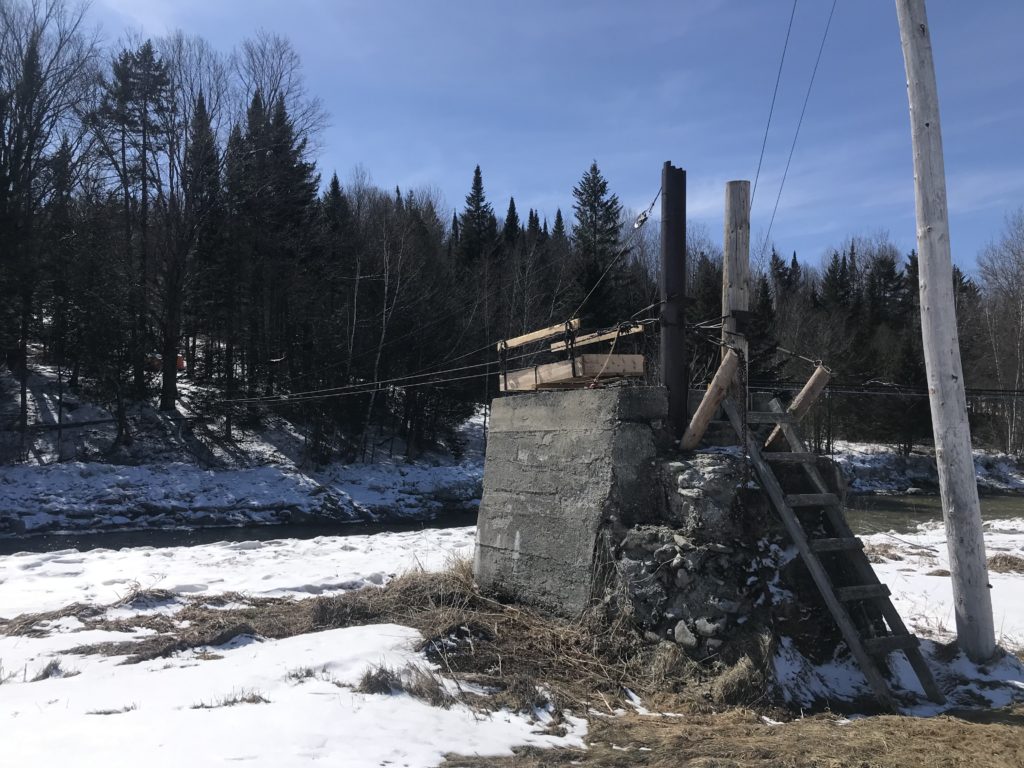
While my cousin still maintains the pulley bridge to tend to his maple grove, he’s since built a bigger sugar shack on the opposite side of the river where sap flows directly from a more modern tree-to-tree plastic tubing collection system.
Let’s celebrate.
We can taste the filtered maple sap when we get there, a watery substance with a hint of sweetness, full of manganese and other electrolytes, minerals and antioxidants. Most of us, though, prefer sampling it after its first stage of evaporation: the réduit, French for reduced, hot and slightly darkened nectar to which some add a splash of gin, which we can expect after hugging our way through the crowd toward my cousin, faithfully standing by the large wood-fired bouilleuse (the boiler, slang for evaporator).
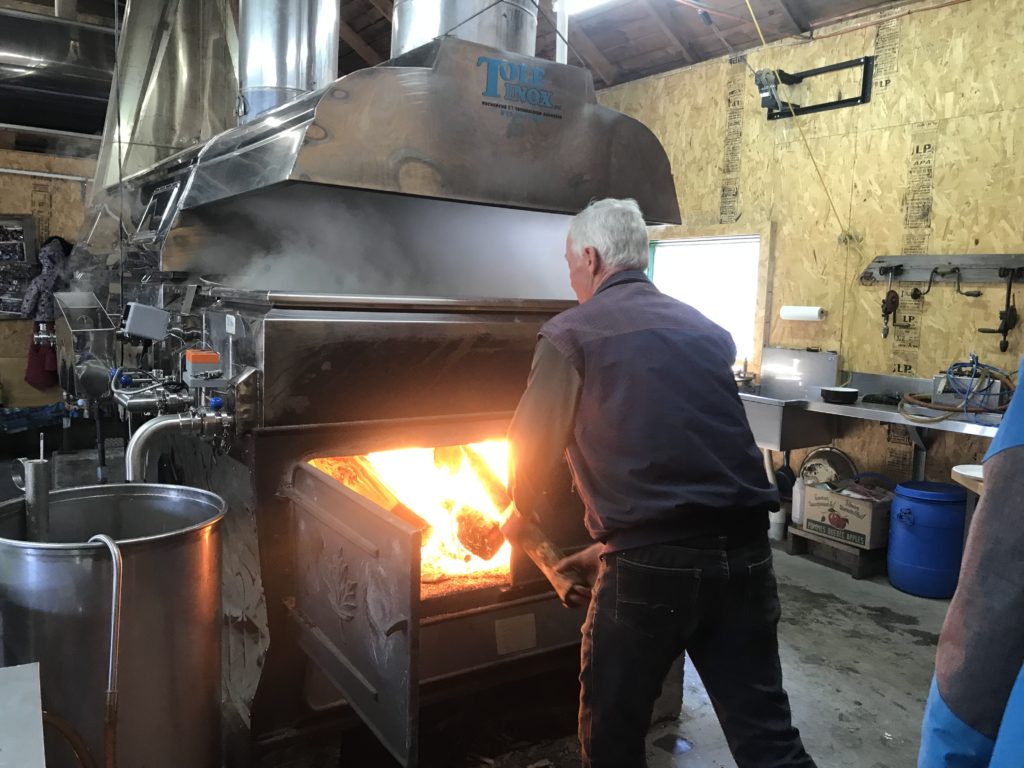
The Saturday get-together centers around a protein-packed potluck lunch reminiscent of a lumberjack breakfast: maple-infused ham, baked beans, eggs poached in maple syrup, sausage, bacon, and crêpes for desert. Cucumbers and cherry tomatoes garnish the two tables in the small kitchen, alongside morning-fresh cheese curds, sliced bread toasted on the hot iron stove and, of course, pure maple syrup. Eighteen is the most we can squeeze together on the table benches so, while we cook and sing seasonal songs, a classic in my family, folks take turns so all can delight in the hearty meal.
After lunch, back in the main room, my cousin sets a deep pan on a portable cast iron burner low to the ground to further boil and thicken a small quantity of maple syrup for my favorite, tire sur la neige (sugar on snow): he’ll pour thin strips of heated syrup on packed snow, which will firm up and we’ll roll with the tips of wooden sticks into little balls of warm, chewy maple taffy mixed with cold crystals of snow.
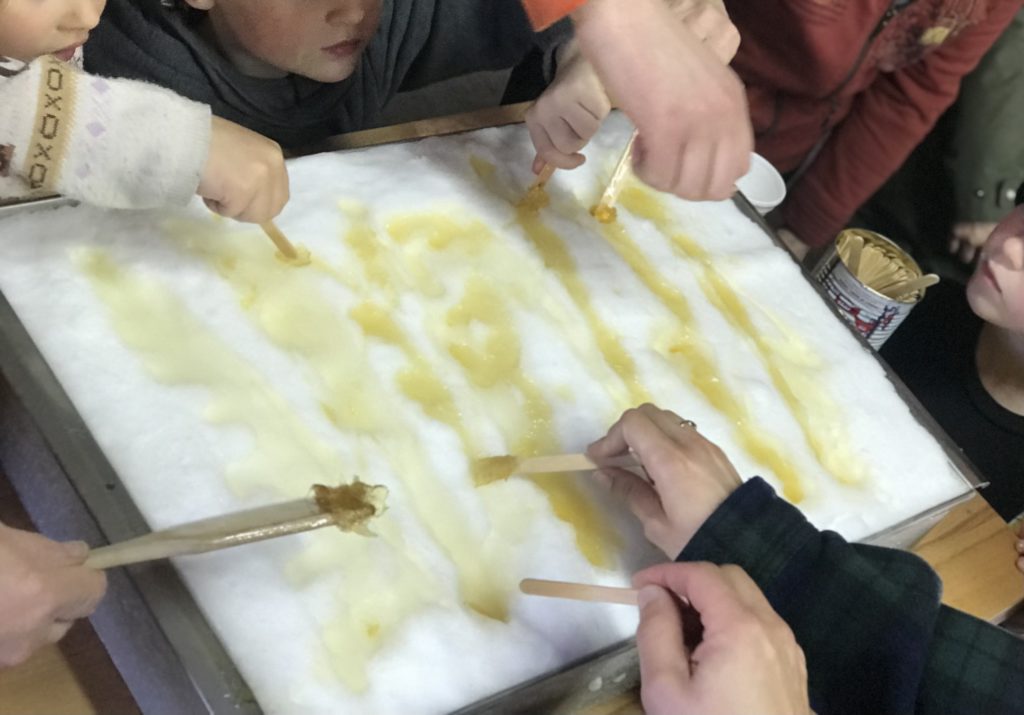
While waiting for the heating syrup to be the right consistency for taffy, we gather around the burner for liche la palette: dipping a wooden spatula into the boiling syrup and licking it off as we would dough from beaters, teaching youngsters how to blow on it to avoid a burnt tongue while turning the spatula to prevent sticky wrists and clothing… a skill I’m not sure is ever really mastered.
Let’s be real.
This is not a place for pressed pants and shiny shoes. In fact, between snow and mud outside and the sugar shack’s cold concrete floor inside, muck boots are the footwear of choice for the family farm event. And, with the likely chance of a brush against someone’s maple taffy and the risk of a playful sticky tap in our hair, it’s best to come both plainly dressed and unadorned.
And perhaps that’s what makes this gathering so special: muck boots, plaid flannel and down-to-earth people huddling around a boiler in a cold shack, rejoicing in the simplicity of seeing one another while savoring the fruits of the land.
Maybe that’s also what makes maple syrup sweet to me, bringing me back to what’s important in life: connection to nature, to people. And how do we truly connect? By being real and accepting of others as they are. And I guess pure maple syrup on a family farm will foster that.
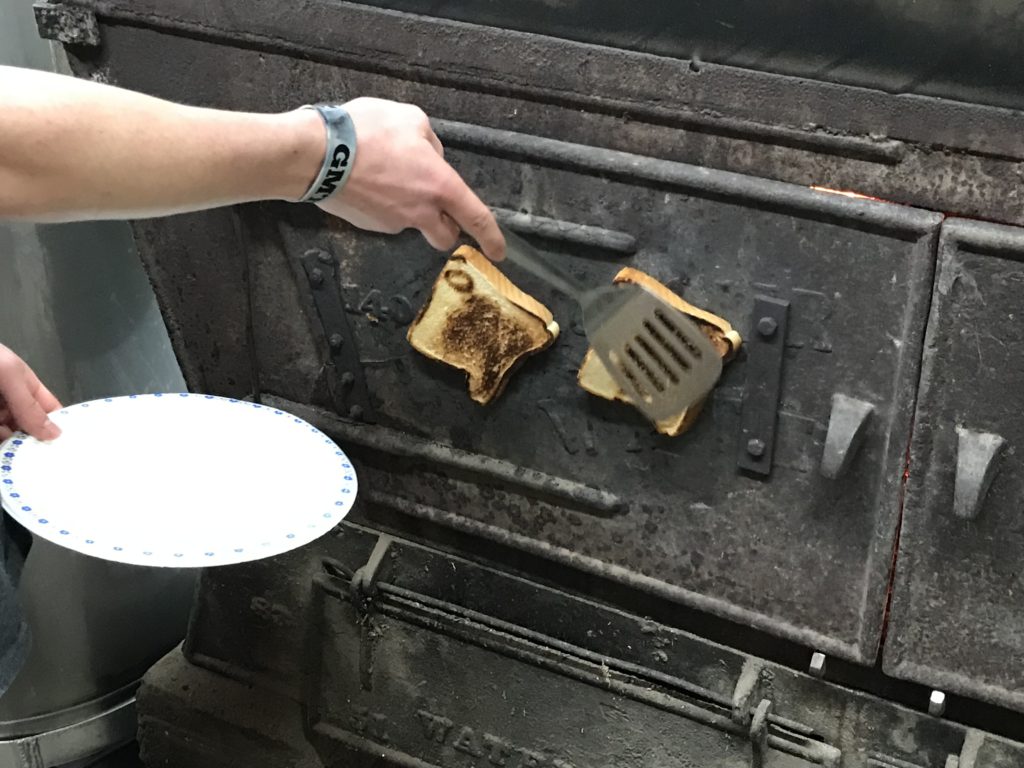
There is no wifi or cell service out there. Children come in and out of the sugar shack throughout the day and have to be creative with their time: playing tag among hay balls, visiting cows, meandering through the fields, watching the river flow. This year, my teen daughter climbed all the way to the top of the hill behind the farmhouse with one of her first cousins once removed and said they saw three deer, one of which doing his business in plain sight.
“Mom, when do we ever see a deer poop?” she chuckled in the car on the way back. “It was so fun!” she added, before telling of the view from up there, rolling hills going down to a valley with a folk house and a cow barn, a wooden box suspended by a gushing river, a tapped sugar bush and a steaming sugar house.
Let’s make it last. Until next year.
Making the trip home with us was our regular load of homemade maple products obtained through various stages of evaporation: maple butter for toasts, maple sugar for cooking, maple syrup for pancakes and more, as well as mini taffy cones, lollipops and meringues for deserts.
Between those and the multitude of other maple treats we find throughout Vermont, like the local maple-infused coffee I had this morning and the maple creemees soon to enhance our summer days, we’ll be cherishing this pure sweetness all year, along with the memories it carries. Thank you, Mother Nature.